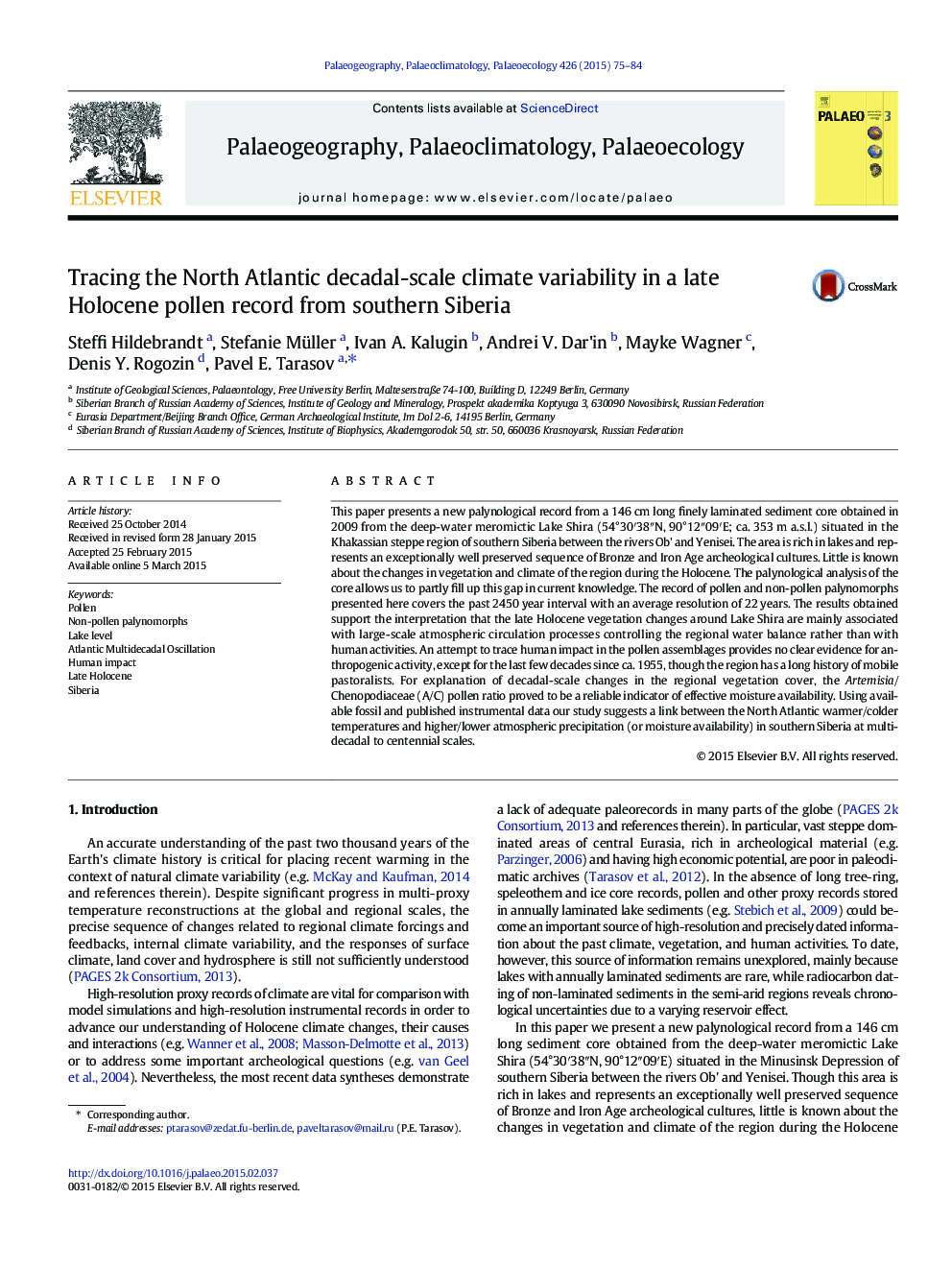| کد مقاله | کد نشریه | سال انتشار | مقاله انگلیسی | نسخه تمام متن |
|---|---|---|---|---|
| 4465983 | 1622164 | 2015 | 10 صفحه PDF | دانلود رایگان |
• Meromictic Lake Shira discloses high-resolution climate archive from the Khakassian steppe.
• Artemisia/Chenopodiaceae pollen ratio reflects regional moisture variability around Lake Shira.
• The Atlantic Multidecadal Oscillation may affect moisture variability in southern Siberia.
This paper presents a new palynological record from a 146 cm long finely laminated sediment core obtained in 2009 from the deep-water meromictic Lake Shira (54°30′38″N, 90°12″09′E; ca. 353 m a.s.l.) situated in the Khakassian steppe region of southern Siberia between the rivers Ob' and Yenisei. The area is rich in lakes and represents an exceptionally well preserved sequence of Bronze and Iron Age archeological cultures. Little is known about the changes in vegetation and climate of the region during the Holocene. The palynological analysis of the core allows us to partly fill up this gap in current knowledge. The record of pollen and non-pollen palynomorphs presented here covers the past 2450 year interval with an average resolution of 22 years. The results obtained support the interpretation that the late Holocene vegetation changes around Lake Shira are mainly associated with large-scale atmospheric circulation processes controlling the regional water balance rather than with human activities. An attempt to trace human impact in the pollen assemblages provides no clear evidence for anthropogenic activity, except for the last few decades since ca. 1955, though the region has a long history of mobile pastoralists. For explanation of decadal-scale changes in the regional vegetation cover, the Artemisia/Chenopodiaceae (A/C) pollen ratio proved to be a reliable indicator of effective moisture availability. Using available fossil and published instrumental data our study suggests a link between the North Atlantic warmer/colder temperatures and higher/lower atmospheric precipitation (or moisture availability) in southern Siberia at multi-decadal to centennial scales.
Journal: Palaeogeography, Palaeoclimatology, Palaeoecology - Volume 426, 15 May 2015, Pages 75–84
